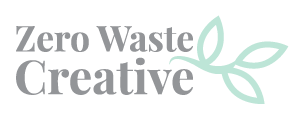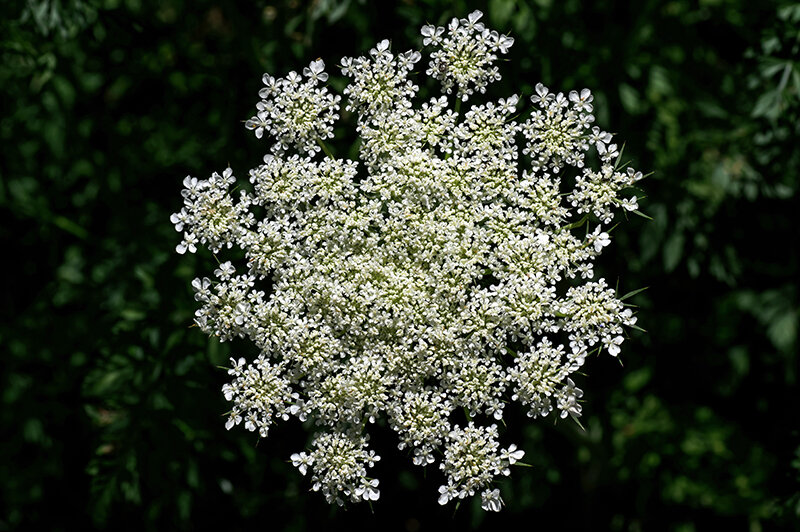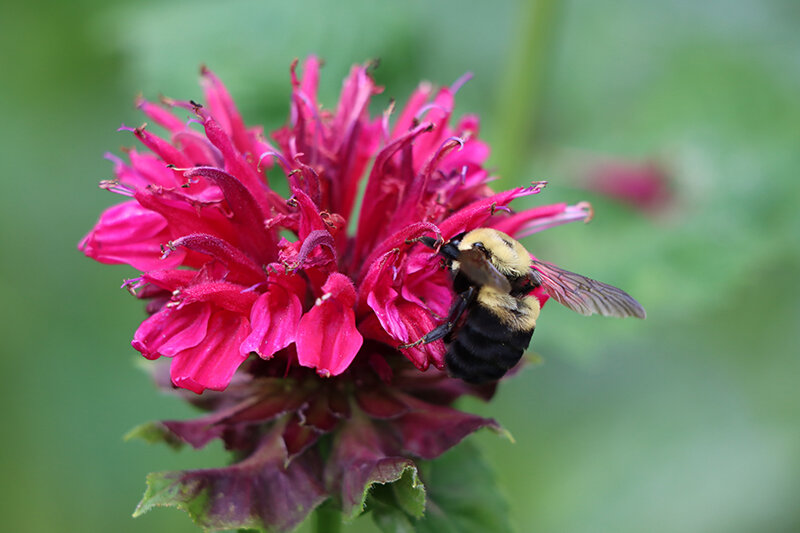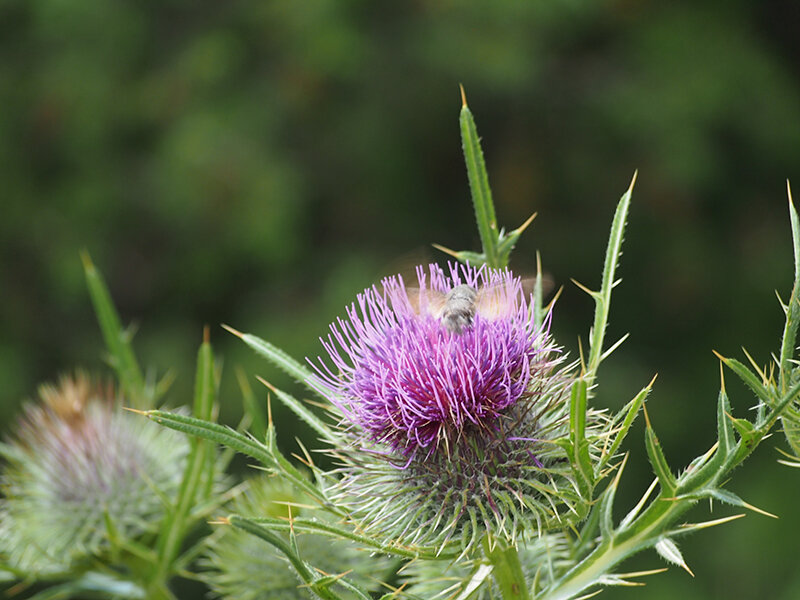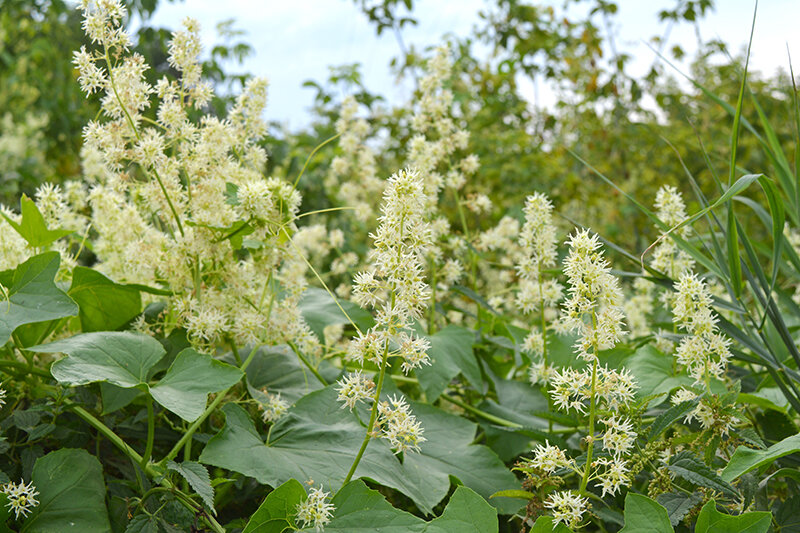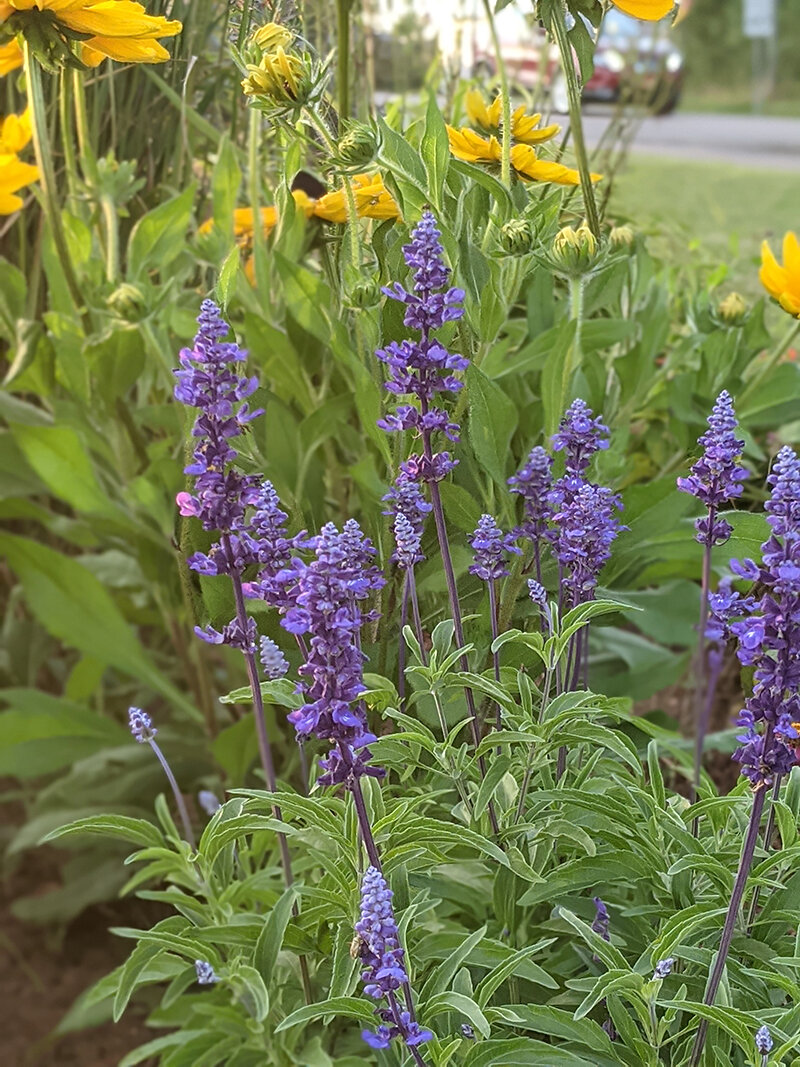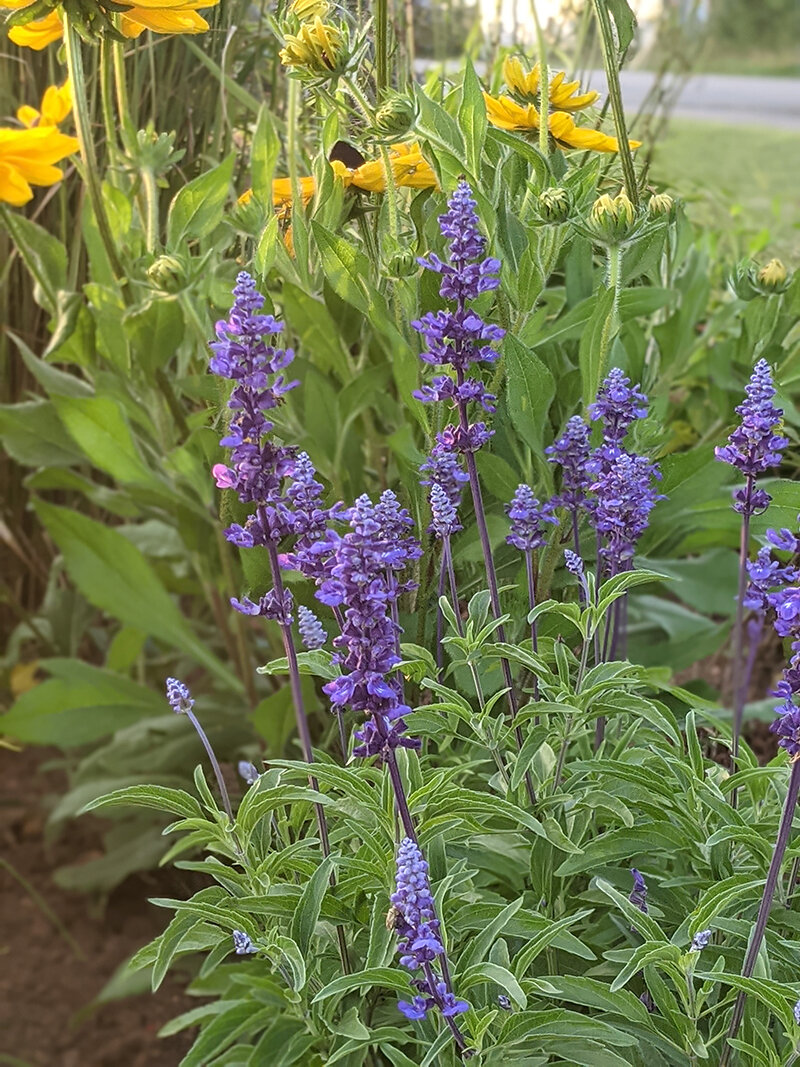15 Plants to Grow in Canada to Help the Honey Bees & Other Pollinators Thrive
Good news! According to Statistics Canada, the number of honey bee hives in Canada is on the rise. Despite this awesome progress, they still face health issues. They are also found to be struggling with finding and collecting food. A third of the bees' time is spent searching for flowers that contain pollen to bring back to the hive. Every single honey bee contributes, and by pollinating so many different plants, they also help our environment and plants prosper.
So how can we aid the honey bees in getting what they need so that their numbers continue to grow? We can help by increasing the variety of nutritious food sources available at home by growing the right flowers and plants in our garden.
Today I am sharing a comprehensive list of plants you can grow in your garden here in Canada to help support the health and future of the honey bee population. It’s important to know that certain plants produce more pollen than others. The ones in this list have a generous supply of nectar and pollen to ensure proper population. They need bees the most, and bees need them! By planting some of these in your garden or around your home you are aiding a beautiful, harmonious relationship between wildlife and new growth.
Agastache
Easy to grow and comes back every year, it can live in full sun or partial shade. These edible flowers will attract a variety of wild bees and butterflies, so leave some for them.
Ammi Queen Anne’s Lace
This beautiful annual attracts wild and domestic bees and is exceptionally useful for companion planting since predatory insects are well attracted to it. Put Ammi in the garden and let these natural predators eradicate caterpillars, aphids, and other pests.
Ammi Queen Anne’s Lace
Balmy Lilac
This flower blooms in late summer, after some of the bee-friendly flowers in the garden, have finished blooming. They're both wildly attractive to bumblebees, butterflies, and hummingbirds. Perennial flowers may or may not survive the winter in gardens along the coast, but they can self-seed from flowers that produce lots of seeds.
Balmy Lilac (Bee Balm)
Borage
Perennial herb with blue edible flowers with mild cucumber flavor and a pleasant fragrance. Pollen is released into the air with the help of a specific resonant frequency caused by buzzing bees; many bumblebee species are attracted to the flowers. In the right soil and light conditions, it can spread gradually.
Sunflower
Besides being abundant pollen and nectar producers, sunflowers have also been shown to heal honeybees. Honeybees and wild bees will both consume sunflower pollen when ill or infected with pathogens.
Buckwheat
Annual plants such as this one are easy to grow and have many uses. Honey Bees are attracted to the nectar-rich flowers of Buckwheat. In addition to smothering weeds and accumulating organic matter, this fast-growing plant makes an excellent cover crop. Improve soil quality and fertility by tilling stems after they flower.
Cardoon
This tall perennial has so many bees flocking to its flowers that you won't believe it. Provide it with a spot near the back of your garden, and enjoy its stunning purple flowers along with the bees.
Chives
The plant launches a bloom of edible pink flowers after it has produced its delicious and mildly onion-flavored leaves. Growing chives as companion plants help repel aphids and at the same time attracts pollinators and predatory insects. So versatile that they can be planted in raised beds and containers.
Wild Cucumber
Cucumber flowers are relatively small, bright yellow, and grow along vines every other leaf. Under the wide leaves, the flowers can be hidden from view, so foraging bees cannot see them. The best way to improve squash pollination is to plant sunflowers around them, which will attract plenty of pollinators.
Digitalis
This biennial plant produces a crown of large leaves in its first year. During its second year, the plant sends up a tall spire, covered in tube-shaped flowers ranging in color from white to deep purple. Bumblebees and other bees find Digitalis to be a very attractive flower, but the flowers aren't edible for humans.
Echinacea
In addition to making excellent cut flowers, the long-lasting blooms are also attractive to pollinators, hoverflies, and other beneficial insects. It is a beautiful flower for allotments, cottage gardens, and general gardens alike. Echinacea is at its best during and after its third year of growth.
Hyssop
Hyssop is commonly found in herb gardens as a small, compact, short hedge plant. From July to November, these flowers bloom with dark blue spikes. Hummingbirds, honeybees, and butterflies love its flowers.
Marigolds
Regardless of the setting, marigolds are easy annuals that are great for container gardens, raised beds, and just about anywhere else. Pollen from these flowers attracts bumblebees, as well as other pollinators in the summertime.
Rosemary
Many of your favorite foods can be made better with Rosemary. An evergreen shrub with beautiful blue flowers through the summer, it is tough and easy to grow. Rosemary is extremely heat tolerant and thrives along driveways and roadsides. Bees absolutely love this fragrant plant.
Zinnia
Many types of solitary bees visit these beautiful flowers, as do honeybees and bumblebees. Despite their size, the nectar-rich central disk flowers are small enough for even small species of bees to gather nectar easily.
Hey, Claudia here
I am a senior graphic designer, a dog mom, an advocate for a zero-waste lifestyle, climate change, and sustainability. My articles are based on personal experience and well researched to give you the best source of information for all things zero-waste.
